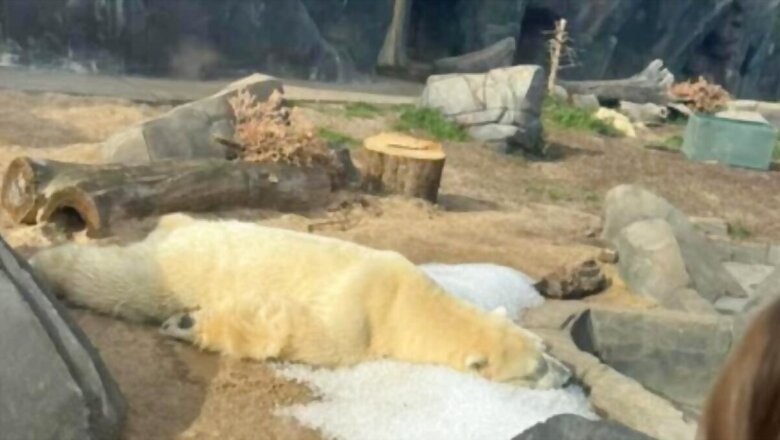
views
There is little doubt that most zoos offer less-than-ideal conditions for wild animals. Recently, a photo of a polar bear, taken at the USA’s Saint Louis Zoo caused much outrage. The now-viral photo showed a polar bear lying on its stomach and keeping its head on a small pool of ice that was thrown on the barren ground. By the looks of it, the bear looked unwell, prompting concerns that the zoo was not providing appropriate living conditions. The polar bear in the photo is named Kali, he was brought to Saint Louis Zoo in 2015 after he was found orphaned in northern Alaska.
On Tuesday, the Zoo addressed the matter by commenting on the viral photo on X. The zoo wrote, “The photo shows a content, healthy bear relaxing on a bed of ice in his favourite napping pose. Bears, just like a lot of animals and pets, sleep in all sorts of positions (yes, sometimes even ones that seem odd). This is normal bear behaviour seen both in zoos and in the wild.”
The photo shows a content, healthy bear relaxing on a bed of ice in his favorite napping pose. Bears, just like a lot of animals and pets, sleep in all sorts of positions (yes, sometimes even ones that seem odd). This is normal bear behavior seen both in zoos and in the wild.— Saint Louis Zoo (@stlzoo) April 1, 2024
Saint Louis Zoo added, “Polar bear Kali has the choice to stay inside in air conditioning or go into his outside habitat. Most of the time, he chooses to go outside. His habitat is full of fun enrichment and has multiple ice machines, cooling fans, shade, and saltwater pools kept cool year-round.”
According to the IUCN Red List, there are 22,000 to 31,000 polar bears in the world, which puts them in the “Vulnerable” category. This is below the more serious Endangered, Critically Endangered, Extinct in the Wild, and Extinct category.
For a long time, zoos have argued that keeping polar bears in captivity aids their conservation and helps in educating the public. However, many animal rights groups disagree. Born Free Foundation, an international wildlife charity, argues that the often-claimed educational and conservation benefits of keeping polar bears in captivity for zoo visitors have not helped in improving their conservation status in the wild.
The charity points out that on one hand zoos “exhibit the bears and lull the public into a false sense of security that the species is being meaningfully protected”, whereas, at the same time, polar bears in captivity see high mortality rates and psychological issues caused by small enclosures and lack of contact with other polar bears. Additionally, keeping polar bears in artificially cold enclosures comes with a high carbon footprint, which adds to the climate crisis responsible for the habitat loss of polar bears.




















Comments
0 comment